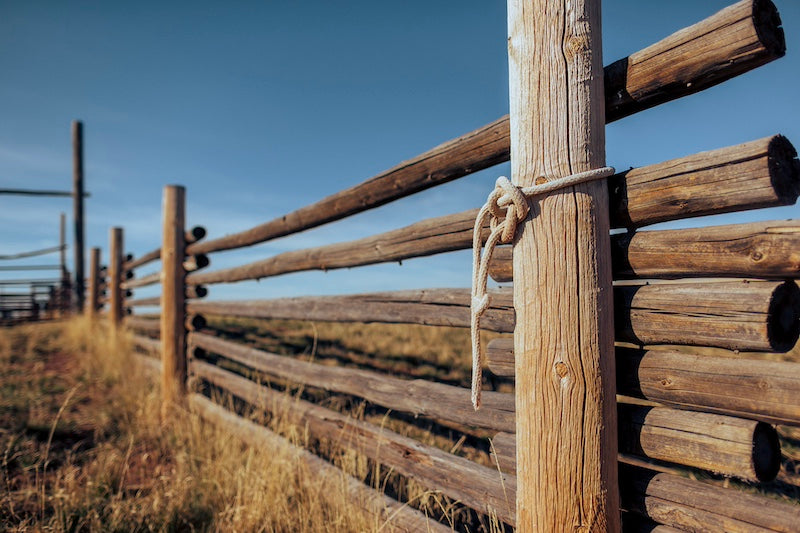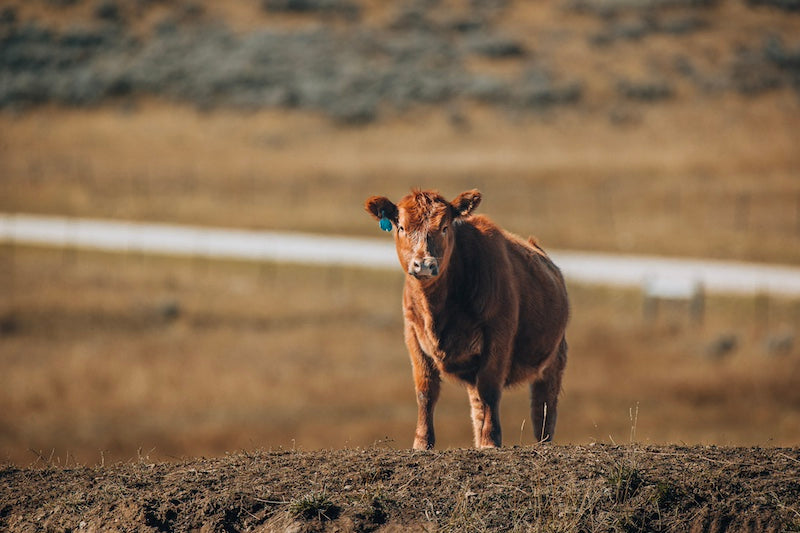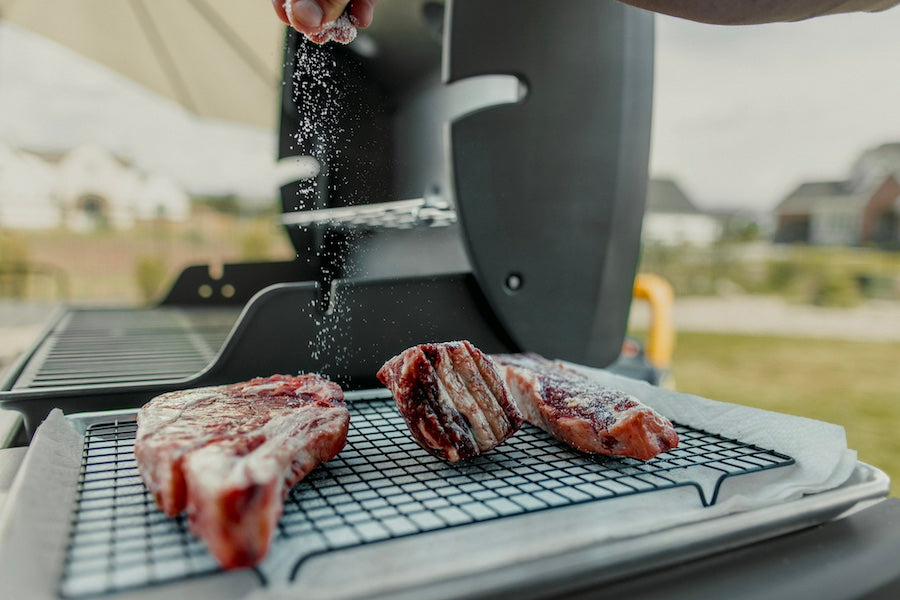
Riding Fences: The Art of Maintaining Ranch Boundaries
Fences have long since been considered the death of the American Old West. Nicknamed the “devil’s rope,” barbed wire (in particular) drastically changed our nation’s agricultural system and overall landscape.
1876 - John Warne Gates built a wire fence pen in San Antonio, Texas. With an audience, John put so-called wild longhorns in the pen and took bets from the crowd on whether the animals could break through the seemingly fragile wire. They couldn’t. Thus, barbed wire fences were born, called “lighter than air, stronger than whiskey, cheaper than dust.”
Joseph Glidden patented the design for barbed wire. Although the design for a wire fence wasn’t the first of its kind, it was the best. Advertisers hailed it the “Greatest Discovery of the Age,” perhaps a stretch seeing as Alexander Graham Bell was about to patent the telephone. Regardless, barbed wire fences marked the end of an era.
The Homestead Act of 1862 specified any honest citizen, including women and freed slaves, could lay claim to up to 160 acres of land in America’s western territories. They needed only to build a house and work the land for five years. Simple in theory, but the prairie was a vast and uncharted expanse, best suited for nomads, not settlers.
After Europeans pushed west, displacing Native Americans from their homes, cowboys roamed freely and herded cattle over the unfenced territory. Settlers needed fences to keep cattle from trampling their crops. There wasn’t wood to spare, especially in the American Desert, so farmers attempted to grow thorn-bush hedges, but the plants were slow-growing and inflexible. Smooth wire fences didn’t work either; cattle pushed through them.
Barbed wire created boundaries in what had been an unbound place. Cattle could no longer graze freely across the plains. The livestock often got stuck in the wire and died (in the thousands) or developed nasty wounds and infections. Fights broke out among Native Americans, cattlemen, and farmers. This led to the “fence-cutting wars.”
Fences not only disrupted a way of life, but they sparked a debate on ownership. Could human beings truly own land? Cattlemen held firm to their principles and desire for an open range but were no match for innovation.
Maintaining ranch boundaries is not a timeless tradition (barbed wire has only been in existence for 150 years). Fences protect livestock, preserve pastures, and keep with modern ranching culture. However, nothing could ever be more Western than wide, open spaces.
Here at Lazy T Ranch, we diligently maintain our ranch boundaries. I (Caroline, the ranch’s writer) went on a side-by-side ride with our cow boss Cooper to put out mineral and discuss the ranch’s fencing techniques. It had rained earlier that morning, so the landscape was awash with the sweet smell of sagebrush. Prairie dogs guarded their burrows. Meadowlarks perched on fenceposts.
I asked Cooper the following questions.
What is "riding fences," and why is it an essential practice at Lazy T Ranch?
Cooper said riding fences usually involves riding a fence line on horseback, which we rarely do here at Lazy T. We opt for a side-by-side to haul supplies more easily and still cover rough terrain. Cooper also said wildlife (elk, deer, pronghorns, etc.) is incredibly hard on our fences, so we must regularly check fence lines to ensure they’re intact. If a fence is broken, cattle will escape the pasture. This can disrupt our grazing schedule and cause other problems.
How does Lazy T Ranch maintain ranch boundaries and ensure livestock security?
“With fences,” Cooper said with a laugh.
What skills and tools are required for effective fence maintenance and repair?
“Pliers, staples, wire, fence stretchers (even though I prefer a hammer), and gloves,” Cooper told me, emphasizing that fencing isn’t difficult to learn. “I can teach someone to fence in 20 minutes.” He agreed having upper body strength is helpful when building or repairing fences.
What are the common challenges faced while riding fences, and how are they overcome?
“Getting supplies through rough terrain,” Cooper said. He explained the ranch’s topography can be a challenge. The fence line follows the ranch’s boundaries regardless of terrain, which means the fence often straddles draws, ravines, and creeks and cuts down steep slopes.
“Sometimes we have to make fence out of whatever is available,” Cooper said, adding that the terrain often dictates the fence’s shape. If the ground is too hard for a T-post, a buck-and-rail fence may be required, or in some cases, whoever is building or fixing fence may need to erect one out of stacked rocks. “It’s all about being resourceful.”
How does riding fences contribute to pasture management and protecting the local ecosystem?
“Good fence lines help us control grazing so that cattle aren’t grazing ground that needs to be rested,” Cooper explained. Ranch land management revolves around stewarding resources. Our cattle move between pastures to ensure quality feed and prevent overgrazing. Fences allow us to maintain a grazing schedule.
Riding fences also helps us locate and remove old, loose barbed wire that poses a risk to cattle, horses, and wildlife. Another way we protect the local ecosystem: We build jump-outs for elk and deer (in our fences) so they can easily exit pastures without harming themselves. Not only does this prevent animal injury, but it saves our fences from damage.
What types of fencing materials and designs are most suitable for ranch boundaries?
“Barbed wire—3-4 strand. Nobody needs a 5-wire fence.” Cooper went on to say fences vary in design; their look and shape depend on the terrain.
How does Lazy T Ranch train new ranch hands to ride fences and maintain boundary lines?
“We take ‘em, hold their hand, walk ‘em to the fence line, then say, ‘Follow it until you get back to where you started,’” Cooper joked. He said the best way to learn fencing is from experience.
How does maintaining ranch boundaries preserve Lazy T Ranch’s Western traditions and values?
“I don’t know about Western traditions and values, but fencing keeps our program sustainable and easier to manage.” Cooper then shared the history of barbed wire and how it was the alleged death of the American Old West.
What innovations or improvements in fence maintenance might Lazy T Ranch adopt in the future?
“We don’t have plans to change our fencing strategies at the moment,” Cooper said, “but some ranches are looking into new ways to manage ranch boundaries. Check out Corral Tech. They developed cattle wearables and virtual fencing.”
Cooper and I reached a simple conclusion by the end of our side-by-side ride.
Fencing is a necessary part of today’s ranching culture and pasture maintenance. It isn’t the dream of any Old West cowboy, and it certainly doesn’t bring joy to the Native Americans whose ancestors called this land home. But we must ride the wave of this ever-changing world and discover how to thrive within it. When agriculture wins, we all win. That’s the motivator of everything we do—to support our nation’s food supply and keep ranching alive. So, we’ll build and fix fences for as long as it puts quality beef on people’s plates.
Explore our Beef Boxes & Merchandise.


